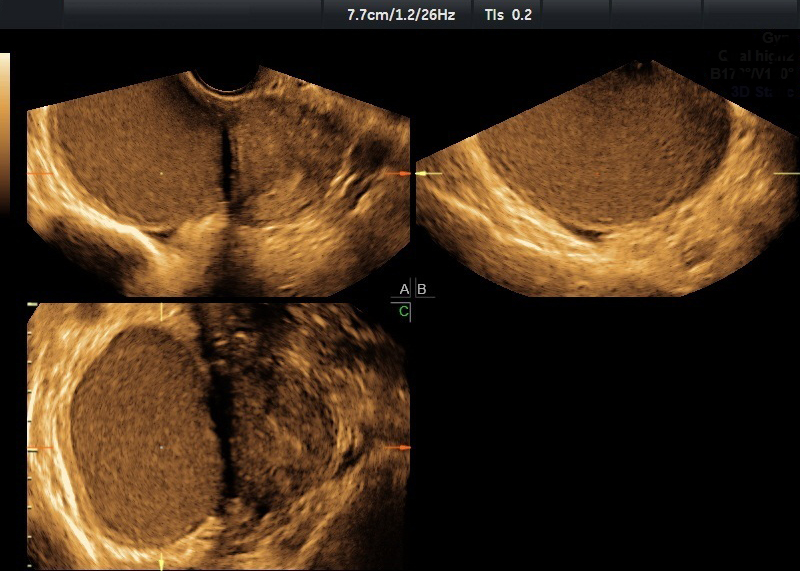
A Mother & Daughter Discuss Being Diagnosed with Endometriosis
From Doubt to Diagnosis

Women with endometriosis wait an average of 7.5 years before they receive a proper diagnosis. Follow a mother & daughter’s search for answers about pelvic pain.

“I was in pain for so long. I think the hardest part is feeling like there’s really nothing that you can do…feeling hopeless.”
“It’s just part of being a girl.” That’s what a lot of endometriosis patients think when they first start having periods with extreme pelvic pain and heavy bleeding. And it was the same for Sarah.
“My periods were pretty rough in high school, but I knew that some women had it worse than others. I kept telling myself, ‘Suck it up, and move on with your life.’”
But when she left for college, something shifted. Sarah experienced a three-week long period and what she described as blinding pain. She was in and out of the Emergency Department multiple times in one month and doctors had no idea what was wrong.
“It was really freaking me out.”
Sarah said. “I kept getting bounced around from doctor to doctor, which got really old. No one really thought it was a gynecology problem. One doctor made me cry because he told me I was a medical mystery.”
Sarah started doing some research and remembered that her mom, Ellen, was diagnosed with endometriosis when she couldn’t get pregnant in the late 80s. Ellen experienced intense pelvic and back pain, but surgery dramatically improved her symptoms.
Women with endometriosis wait an average of 7.5 years from the onset of their symptoms, before they receive their diagnosis.1 Desperate to find answers to end her own misery, Sarah visited Ellen’s gynecologist during her winter break. The physician performed a laparoscopy and discovered that Sarah also had endometriosis—and that it had invaded her uterus, ovaries, and bladder—and was wrapped around her bowel.
Over the next several years, Sarah was hopeful that ablation surgery and medication would improve her condition, but her symptoms got progressively worse, leaving her bedridden for months.
“For six months I really couldn’t do anything. I could barely function. It was really scary because I wondered if this was going to be my life now?”
After more surgeries and what seemed like a revolving door of doctors, Sarah was eventually referred to leading endometriosis specialist, Dr. Rami Kaldas, who performed a life-changing excision surgery. The Wisconsin surgeon is part of a worldwide network of physicians that utilizes GE’s Voluson ultrasound technology in diagnosing, monitoring and treating gynecological conditions.
Sarah said past physicians had performed ultrasounds as part of exams, but she concluded that the technology was less sophisticated. Adding to the confusion, numerous physicians would read the exact same scan and come up with different results.
According to Sarah, Voluson allowed for much more thorough scans and made her feel empowered in her own care.
“It was my first 3D scan so that tells you about the other scans my doctors were using. The screen was a whole lot bigger. It was easier to see my anatomy, and my doctor could point to some of my problem areas. I was able to see and really understand it better than ever before,” Sarah explained.
Her mother, Ellen added, “It’s so important to know you are going to a real expert that is very knowledgeable—and that they have high-end imaging equipment.”

Deep infiltrating endometriosis, ureteral endometriotic nodule (3D).

Typical “ground glass” appearance of endometrioma 2
Today, Sarah is almost pain-free and is grateful she has her life back. But she says she’s lost a lot faith in the health care system—and is still baffled by the state of medical care for endometriosis.
“I think most of us start off with that trust already there, but I’ve seen so many doctors who didn’t know how to help or want to help—or thought I was making it all up,” she attested.
Sarah stresses that patients want answers. She says it starts by finding a doctor who is simply willing to listen and explore your symptoms—diagnosing, not just dismissing.
“If you’re having really, really painful periods, there’s a difference between a doctor who says you’re probably fine and then sends you on your way—and a doctor who does a scan.”
-
A Voluson 3D ultrasound of the pelvic anatomy, coupled with a careful exam, can help streamline the process of diagnosing endometriosis. Learn how Dr. Hanson manages her patients and sign up to Stay Informed.
-
Pelvic pain can be multifactorial in origin – the single most common cause is endometriosis. Transvaginal ultrasound has been shown to detect endometriosis with high accuracy.
-
Learn more about the 4-step ultrasound evaluation as suggested by the International Deep Endometriosis Analysis (IDEA) group.
-
When a patient presents with abnormal bleeding and you are concerned about endometrial hyperplasia, does doing a Voluson ultrasound first make sense? Learn here why it does and sign up to Stay Informed.
-
More than 11% of women in the USA may have endometriosis – it is a common cause of pelvic pain for women in their 30s and 40s. Voluson 3D ultrasound can add valuable information before surgery, especially in diagnosing and evaluating infiltrating endometriosis.
-
Patients may come to you with many ideas about endometriosis – the information they have is not always accurate. Learn about how Dr. Hanson separates fact from fiction for her patients. Sign up to Stay Informed.
-
Learn more about how Dr. Rami Kaldas is helping endometriosis patients at the Kaldas Center.


